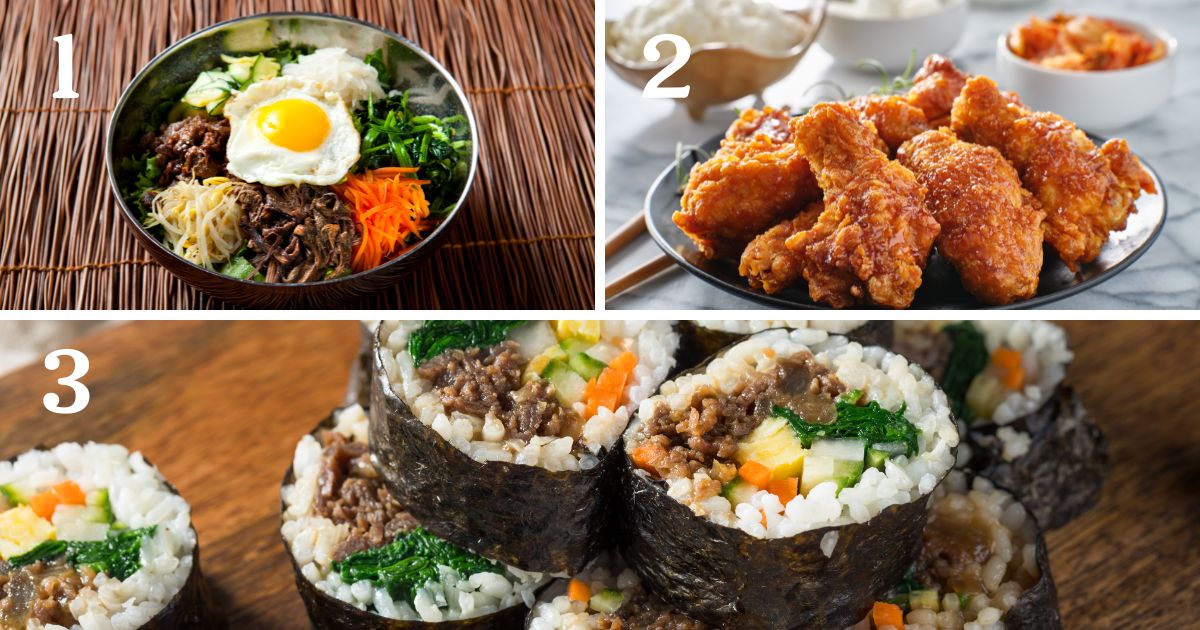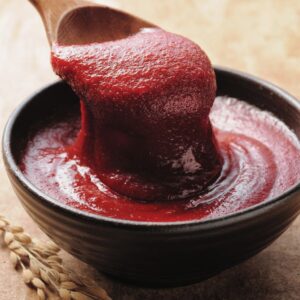Korean cuisine has captured the hearts and palates of food lovers worldwide, thanks to its bold flavors and diverse dishes. Among its many delights, Korean Mayo stands out as a versatile and delicious condiment that can transform ordinary meals into extraordinary culinary experiences. This easy Korean Mayo recipe will guide you through creating this flavorful addition at home, allowing you to infuse a touch of Korea into your everyday cooking.
Korean Mayo, a blend of traditional mayonnaise and Korean ingredients, holds a special place in Korean cooking. Its unique flavor profile, combining the creamy richness of mayonnaise with the spicy, tangy notes of gochujang (Korean chili paste) and rice vinegar, makes it an indispensable condiment in many Korean and fusion dishes. Whether drizzled over bibimbap or used as a dipping sauce for Korean fried chicken, Korean Mayo enhances each dish with its distinct taste.
This article aims to provide an easy and authentic Korean Mayo recipe, perfect for both seasoned chefs and kitchen novices. By following this straightforward guide, you’ll be able to create a condiment that not only elevates traditional Korean dishes but also brings a new dimension to your everyday meals. Let’s dive into the world of Korean Mayo and discover how simple it is to make this delightful sauce at home.
Ingredients Needed for Korean Mayo
Essential Ingredients
To create authentic Korean Mayo, you’ll need the following core ingredients:

- Mayonnaise: The base of the condiment, providing creaminess and richness.
- Gochujang: A staple in Korean cuisine, this chili paste adds spice and depth of flavor.
- Rice Vinegar: Offers a tangy balance that complements the creaminess of the mayonnaise.
- Honey or Sugar: A touch of sweetness to balance the heat and acidity.
- Soy Sauce: Adds a savory umami element to the mix.
Each ingredient plays a crucial role in achieving the perfect balance of flavors that define Korean Mayo. These items can be found in most supermarkets or Asian grocery stores.
Optional Add-ins
To customize your Korean Mayo, consider these optional ingredients:

- Garlic: Adds a punch of flavor and aroma.
- Sesame Oil: Infuses a nutty, toasty essence.
- Lemon Juice: Enhances the tanginess and adds a fresh citrus note.
These variations allow you to tailor the Korean Mayo to your taste preferences and the specific dishes you plan to serve it with.
Ingredient Sourcing Tips
When sourcing ingredients, authenticity is key. Look for gochujang and rice vinegar in the international or Asian foods section of your local supermarket. If you have difficulty finding them, online retailers often carry a wide selection of Korean ingredients. For substitutions, consider using white vinegar if rice vinegar is unavailable, and a mild hot sauce or chili paste as a stand-in for gochujang, though this may alter the flavor slightly.
Step-by-Step Preparation Guide
Preparation Steps
Follow these steps to make your own Korean Mayo:
- Combine Ingredients: In a medium bowl, mix 1 cup of mayonnaise, 2 tablespoons of gochujang, 1 tablespoon of rice vinegar, 1 teaspoon of honey or sugar, and 1 teaspoon of soy sauce.
- Mix Thoroughly: Whisk the ingredients together until smooth and well combined.
- Taste and Adjust: Taste the mixture and adjust the seasoning as needed. Add more gochujang for extra spice, more honey for sweetness, or more rice vinegar for tanginess.
Visual and Textual Aids
For the best results, consider following these visual cues:
- Texture: The Korean Mayo should be smooth and creamy, with no lumps.
- Color: The sauce will have a light reddish hue from the gochujang.
Including step-by-step photos or a video tutorial can further assist visual learners in achieving the perfect consistency.
Common Mistakes to Avoid
- Overmixing: Avoid overmixing, which can cause the mayo to break and become oily.
- Incorrect Ratios: Stick to the recommended ingredient ratios to maintain balance. Too much gochujang can overpower the mayo, while too little can make it bland.
- Skipping Adjustments: Always taste and adjust the seasoning to suit your preference.
Pairing Korean Mayo with Various Dishes
Traditional Korean Dishes
Korean Mayo pairs exceptionally well with a variety of traditional Korean dishes:

- Bibimbap: Drizzle Korean Mayo over this mixed rice dish to add a creamy, spicy kick.
- Korean Fried Chicken: Use it as a dipping sauce to enhance the crispy, savory flavors.
- Kimbap: Spread a thin layer inside these Korean rice rolls for an extra layer of flavor.
Fusion and International Cuisine
Korean Mayo’s versatility makes it an excellent addition to fusion and international dishes:
- Korean Tacos: Add it to tacos filled with Korean BBQ beef or pork for a spicy, creamy twist.
- Burgers: Use it as a burger spread to elevate the classic American favorite with Korean flair.
- Salads: Incorporate it into salad dressings for a unique and flavorful salad experience.
Serving Suggestions
For an appealing presentation:
- Dollop and Drizzle: Use a spoon or squeeze bottle to add artistic dollops or drizzles on plates.
- Garnish: Garnish dishes with sesame seeds or chopped green onions alongside the mayo.
- Side Dish: Serve Korean Mayo in small bowls for dipping or spreading, ensuring each diner can customize their meal.
Health and Nutritional Information
5.1. Nutritional Breakdown
A serving of Korean Mayo typically contains:

- Calories: Approximately 100 calories per tablespoon.
- Fats: Around 10 grams of fat, primarily from the mayonnaise base.
- Carbohydrates: Minimal carbohydrates, depending on the amount of sugar or honey used.
- Proteins: Low protein content, primarily from soy sauce.
Health Considerations
While Korean Mayo is delicious, be mindful of:
- Sodium Content: Gochujang and soy sauce add significant sodium. Opt for low-sodium versions if necessary.
- Allergies: Check for potential allergens, especially in soy sauce and mayonnaise.
- Caloric Intake: Monitor portions to avoid excessive calorie consumption, especially if watching weight.
Moderation and Balance
Enjoy Korean Mayo in moderation as part of a balanced diet. Here are some tips:
- Portion Control: Use small amounts to add flavor without overloading on calories.
- Healthier Alternatives: Substitute full-fat mayonnaise with a lighter version or Greek yogurt for a healthier option.
- Balanced Meals: Pair Korean Mayo with nutrient-rich dishes like vegetables and lean proteins to maintain dietary balance.
Conclusion
We’ve explored the world of Korean Mayo, from its essential ingredients and preparation steps to its versatile uses and health considerations. This easy Korean Mayo recipe is a gateway to enhancing both traditional Korean dishes and everyday meals with a burst of flavor.
Don’t hesitate to experiment with this recipe. Adjust the ingredients to suit your taste, and try pairing the mayo with different dishes to discover new favorite combinations. Share your variations and experiences in the comments section to inspire other readers.
Ready to make your own Korean Mayo? Gather your ingredients and follow the simple steps outlined above. Once you’ve created your masterpiece, share your results on social media using the hashtag #EasyKoreanMayo. For more delicious mayo recipes, check out Sriracha Mayo, Korean Mayo, Japanese Mayo, and Kewpie Mayo. Happy cooking!





1 Comment
Pingback: Discover How to Use Gochujang: Magic in Everyday Cooking